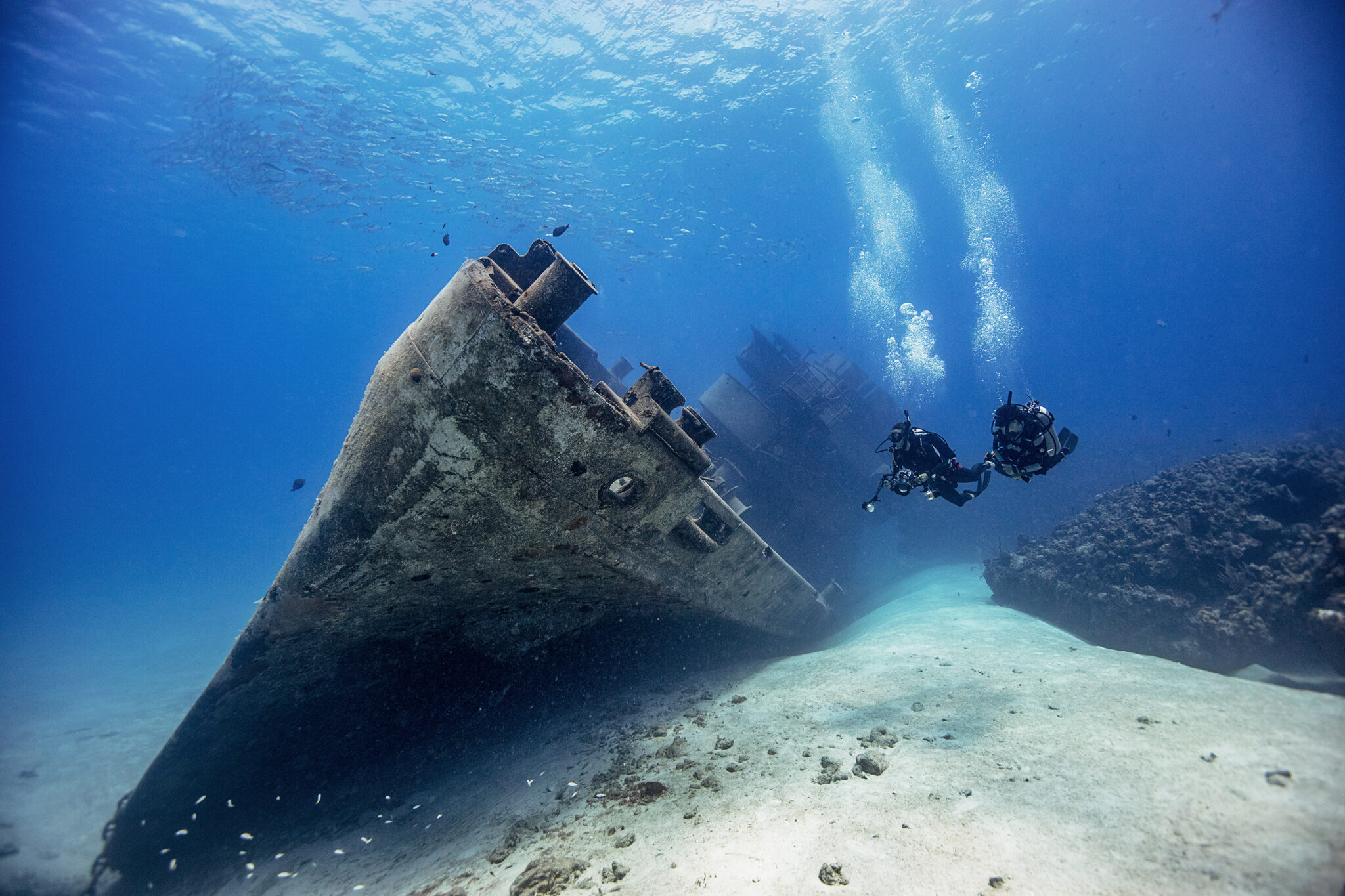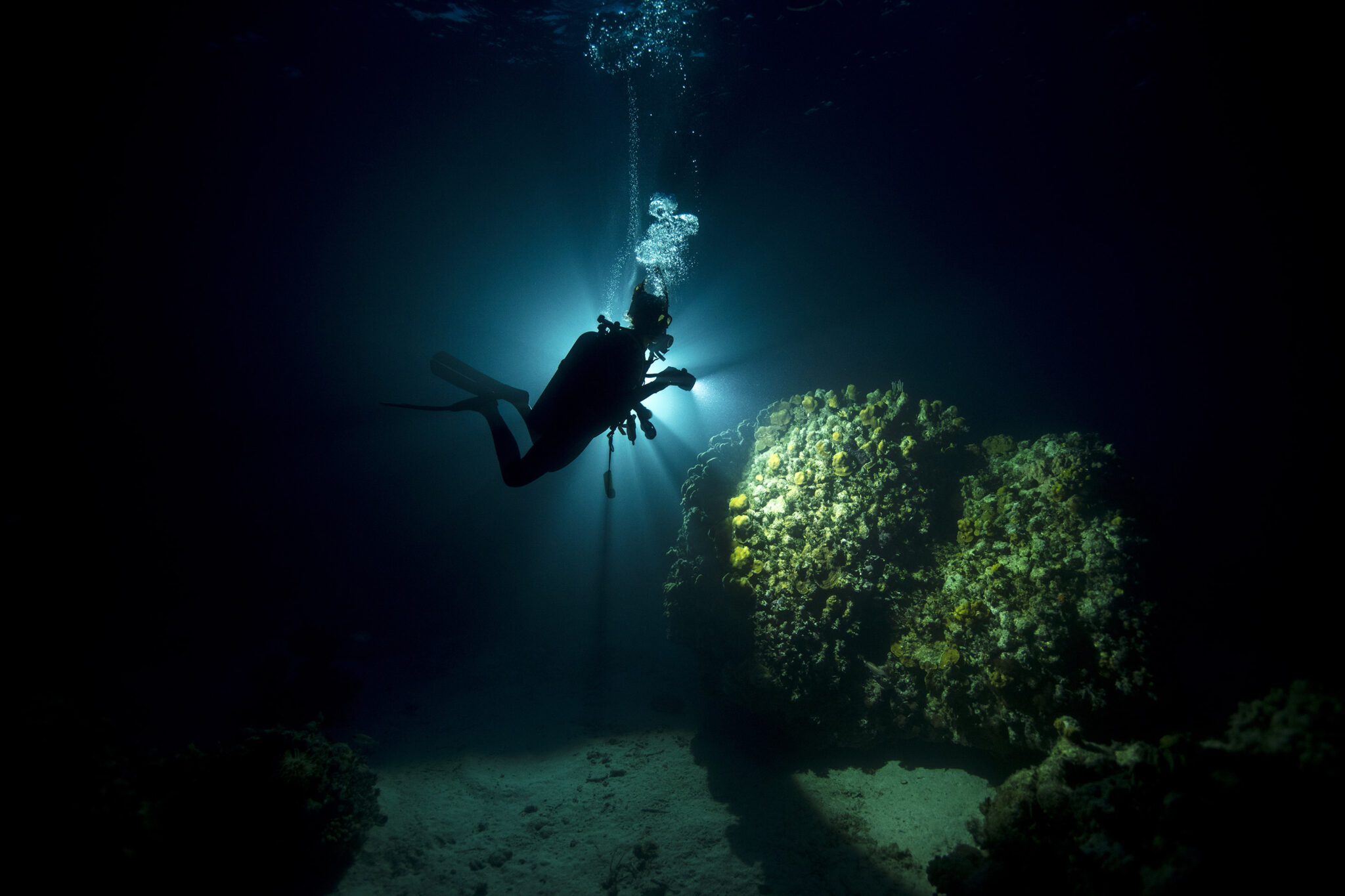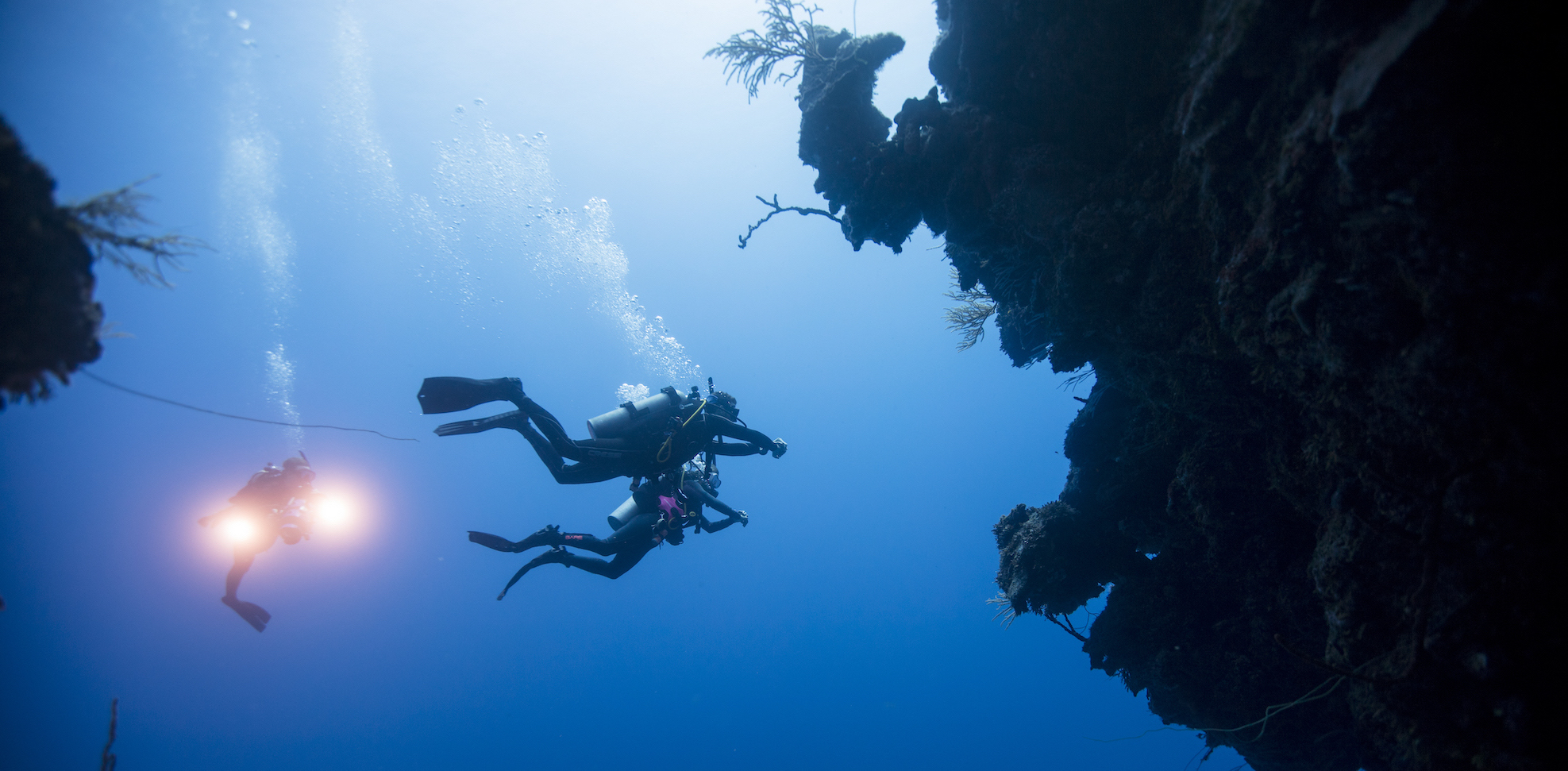The trio of Cayman Islands is a British Overseas Territory situated in the western Caribbean Sea. Grand Cayman, Cayman Brac and Little Cayman house over 300 dive sites, making up the breathtaking Cayman dive map. The Cayman Islands are generous with their variety of dive sites. From the renowned USS Kittiwake Wreck to the dream-worthy Bloody Bay Marine Park, this is a serious destination for dedicated divers as well as newbies!
USS Kittiwake Bloody Bay Marine Park Ghost Mountain Bert Brothers Boulders East Chute/Cayman Mariner The Cascades
USS Kittiwake, Grand Cayman
USS Kittiwake is classed as one of the best wreck dives in the world, not only on the Cayman dive map. After serving as a submarine rescue ship for 49 years, the ship was decommissioned in 1994. The ship was then given to the Cayman Islands Tourism Association (CITA) to be sunk as an artificial reef.
Open Water divers can explore the first two decks starting at 4.5 meters (15 feet) of the USS Kittiwake, while Advanced divers can rove amongst all five decks to a maximum of 19 meters (65 feet). Marine life amongst this wreck is plentiful. Arrowhead crabs, peppermint shrimp and fireworms are just a few species of macro life living here. Turtles, groupers and eagle rays are common encounters, too!
Bloody Bay Marine Park, Little Cayman
Situated in Little Cayman, Bloody Bay Marine Park is possibly the overall top-rated dive spot in the Cayman Islands. The marine park holds 24 dive sites, one of the best is named Bloody Bay Wall. The reef wall plummets down beyond 304 meters (1000 feet) but is accessible to beginners, as it starts at just 6 meters (20 feet).
Bloody Bay Wall was supposedly named after the many pirate battles that took place here in the past. Now, it is full of tube corals and coral fans, attracting green turtles, black triggerfish and eagle rays. Other well-loved sites in the park include Marilyn’s Cut for black coral, and The Chimney (an awesome photo spot!).

Ghost Mountain, Grand Cayman
Just off the northern tip of Grand Cayman lies a towering, mushroom-shaped pinnacle at Ghost Mountain dive site. The pinnacle has the deepest point at over 1000 meters (3280 feet). However, Open Water divers can still enjoy the pinnacle at shallower depths of 15 meters (50 feet). You can expect to find thriving gorgonian fans and octopus sponges wrapped around the reef. Alongside the reef, this is a hot spot for groupers and wrasses.

Bert Brothers Boulders, Cayman Brac
Bert Brothers Boulders lies towards the north end of Cayman Brac. To begin, you’ll meet the 12 meter-deep (40 feet) reef displaying gigantic coral heads stiped with both hard and soft corals. Ridges in the topography here form exciting swim-throughs and overhangs alongside tube sponges, stunning elkhorn corals and sightings of the house green moray eel.
East Chute/Cayman Mariner, Cayman Brac
Easy Chute lies northeast on the Cayman dive map in Cayman Brac. This site holds a little of everything, pairing an immense reef wall with a wreck – the Cayman Mariner. The site begins with a large sandy canyon sitting at 19 meters (65 feet). This is followed by a vibrant reef wall engulfed in barrel sponges, yellow tube sponges and red rope sponges.
To elevate this site even further, the Cayman Mariner wreck sits upright at just 16 meters (55 feet) on a sandy bottom. The shallow depth makes it accessible to Open Water-level divers, too! Likely sightings here include turtles, schools of barracuda and green moray eels.

The Cascades, Little Cayman
The first point in the Jackson Bay area of Little Cayman is The Cascades. The dive begins with wandering through the arrangement of mini reef walls leading down to an area named “La La Land”. Here you’ll find pinnacles and coral heads, gently cascading down a pearly white slope before reaching the deepest point.
Finally, the last wall begins at 22 meters (75 feet) and continues down to over 45 meters (150 feet), often paired with a current, so you’ll need your Advanced certification for this site. In “La La Land” you’ll often find reef sharks and turtles meandering along the walls. Remember to bring your camera for this one!
Ready to Visit The Cayman Islands?
The Cayman Islands are warm and, of course, beautiful all year round with the best months to visit being between March and June, if you are looking to escape the crowds. It’s worth noting that the high season typically runs from December to April, so the islands will be thriving in these months. The PADI Travel team are available 24/7 to help book your liveaboard or dive resort in the Cayman Islands!
Share This
